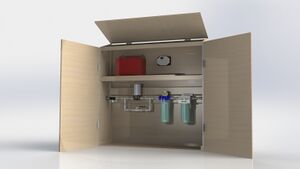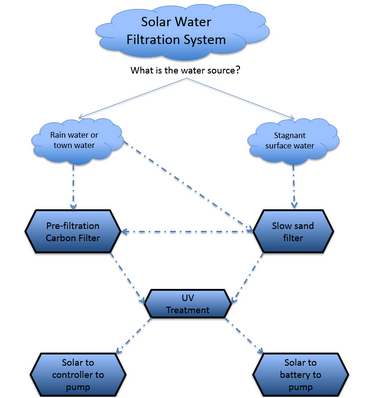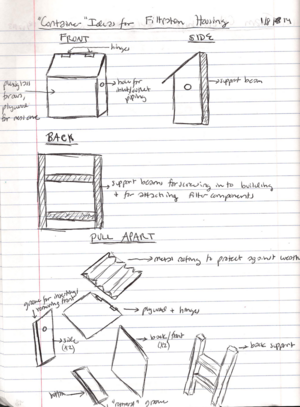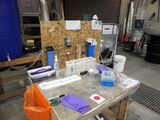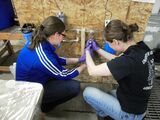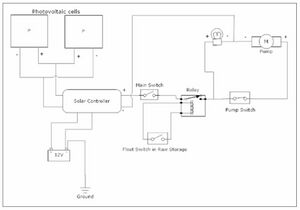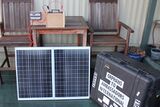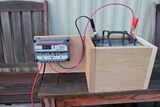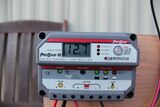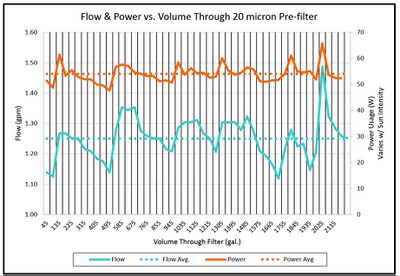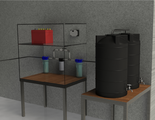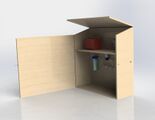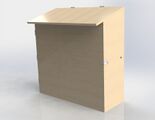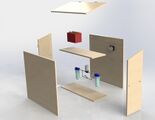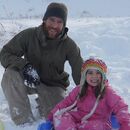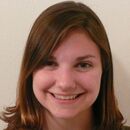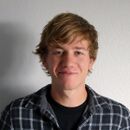Solar Water Filtration System
| Sponsors | Orphans to Ambassadors |
| Team Name | H2Orphans |
| Duration | Fall 2013 - Spring 2014 |
| Faculty Adviser | Dr. Tom Hess |
| Our Team | Kyle Rainer
Tyler Marines Sharon Strom Amy Cox Nick Stroud |
Developed in collaboration with Orphans to Ambassadors, our University of Idaho Senior Design Team, H2Orphans is developing and building a solar powered water filtration unit designed to be implemented in preexisting rainwater catchment systems. The design will provide clean, safe, pathogen-free water to remote orphanages in the third world that are without readily available power sources.
Sponsor
Orphans to Ambassadors is working with multiple orphanages in developing countries to build a long term solution to address the lack of clean drinking water available at children’s homes and orphanages. The organization has begun building the first generation solar powered water filtration system in which a small 12 volt pump (powered by 60 watt solar panel) pulls water from a holding container and pushes the water through a basic carbon filter and into a storage tank for cooking and drinking. Our job as a team is to improve the current system to meet the World Heath Organizations criteria for clean drinking water. Water Sanitation Health W.H.O.
Orphans to Ambassadors is a nonprofit working with orphans and sustainable technology to create cleaner futures. Not only do the technology, education, and practices give children cleaner water and food, brighter and safer energy, and more free time to be kids, we’re also creating renewable foundations in developing countries where any growth means more technology: the cleaner now the better tomorrow.
Design Goal
Design and construct a solar-powered water filtration/disinfection system that will provide potable water for daily use. It will
- Provide a sustainable solution that allows users to be as self-sufficient as possible.
- Be robust and parts and easy to replace or repair in the field.
- Reduces the potential for exposure to water borne illnesses.
Design Specifications
Key Features:
- Compact and self-contained
- Easy to use and implement in remote locations
- Provides potable water
Effluent water meets the following WHO requirements:
- Total coliform and Escherichia coli are undetectable in a 100 mL sample
- Resultant turbidity < 5NTU
Meets the following requirements:
- Produces 100 gal/day at minimum
- Transportable components fit within two large pelican cases
- Transportable components and casing weigh less than 100 lbs. to meet oversize luggage requirements
Includes the following components:
- A digital display for the power control
- ¾” inlet and outlet connections
- 5 years worth of replacement parts
- An instruction manual
Conceptual Design Phase
The design direction that we ended up picking was carbon UV filtration with a battery supported pump. We found that this system would not only best meet the needs of our client, but would provide clean water that fit in a low maintenance, durable, and sustainable package.
Our team has specked the filtration components, pump, battery and flow meter as linked below. Initially Orphans to Ambassadors provided us with a few components to help us in our design, these idem are also listed/linked.
Specified Components
Supplied Components
- Pre-filtration Canister
Detail Design Phase
At the start of the second semester we gathered all of the components to begin testing. And split the team into 2 sub-teams, where one focused on the testing/validating the water quality needs and the other worked on the energy balance of the system, specifying a controller/electronics, and making a Solidworks model of the system.
After finalizing the microbial testing, the Solidworks modeling, and electrical testing each team came back together to finish building the system and developing the operation manual.
Detailed Product Specifications
- Filtration (Amount needed for a 5 year maintenance interval)
- Filters, 10 x 0.5μm carbon block and 20 x 10μm or 20μm pre-filter(replace each every 6 months)
- Mesh pump strainer
- UV bulbs, 5 Bulbs(replace every 1.14 years or 415 days)
- Pura UVB1-EPCB UV + 0.5μm filter housing
- Pre-filter housing along with built in pressure gauge
- Power
- Panels (>=50W total power required(used supplied 2x50W CDT panels with minimal sunlight for testing purposes))
- Morningstar ProStar solar controller
- Batteries (>=35Ah, 12V-DC, Deep-cycle Lead-Acid)
- Pump (Cole Palmer PD Pump, 12V, 1.8 gpm)
- Misc. Parts(Tubbing, connectors, system housing, O-rings etc.)
- Manual
Water Quality Testing
Process
We are spiking the influent water with approximately one billion bacteria (E.coli, Shigella and other Enterrobacteriacea) per 45 gallons and running it through our filters/UV disinfection system. Periodically we sample the water before the UV/carbon filter to ensure that the bacteria are entering the disinfection unit alive and unharmed, and then we are also sampling after the disinfection unit to make sure that the bacteria have been mutated. We are using 3M Petrifilms to culture/grow our bacteria.
Testing Photo Gallery 2/7/14
Testing Results and Calculations
Results can be found with the links below:
Dechlorination Experiment 3/7/14
Dosage Determination for Class B Water Sources
Summary of Results
Initially we found that our tests were inconclusive. We believed that there may have been sources of error in our experimental setup and/or methods. Therefore we ran additional tests to isolate the potential error by using a third party company (Anatek) to that we though would provide even more validity. The results from this series of testing we also found to be the same as before.
Finally after doing more testing on the source water provided out of a municipal university spout we determined that the chlorine content was significant enough to kill off much of the influent dosage determined by the Class B water classification. With this issue we determined that the initial spike containing one billion bacteria (E.coli, Shigella and other Enterrobacteriacea) per 45 gallons provided more that conclusive results to that satisfy the system needs since the dose was excessive and the results where predictable.
We stand by by our testing and belive that they meet the basic WHO system requirements as mentioned above.
- Amount of water tested: 3856 gal.
- Microbial removal efficiency: 98.29%
- Average flow rate: 1.23 gpm
Solar Power Testing
Energy Analysis
The energy analysis is an analysis of energy usage for approximating the required batteries and solar panels to meet the desired specifications.
Results of Analysis:
| System run time for 100 [gallons/day] = 1.282 hr/day | System - Preserves Power Usage |
|---|---|
| Power Needs Daily | 102.6 [Wh] |
| Number of New (50W) Supplied Solar Panels need to Supply
Daily Power with Avg. Sunlight and no Storage |
0.4274 |
| Number of "20 year old" (40W) Supplied Solar Panels need to
Supply Daily Power with Min. Sunlight and no Storage |
0.9158 |
| Number of Batteries (35Ah) needed with Min Sun | 0.03957 |
| Number of Batteries (35Ah) needed with 2 Days without Sun | 0.9558 |
Summary of Analysis
From these results we concluded that we would choice system 2 to preserve the power use-age. Although we know it is important to conserve the bulb life for the UV, the power draw that running it all the time simply consumes too much power over the long term. Furthermore we discoed that there is 5 min delay for the UV to illuminate to its proper operation luminosity therefore we needed to add an additional switch to eliminate water waist from running the pump while illumination process occurs. To the right is the final wiring diagram,
Links for the EES analysis can be found below in the Document Archive, Math Models
Physical Solar Testing Results
During a day of filter testing we also measured the power use-age in conjunction with the flow rate and total volume over time. Although there was moderate cloud cover, we still where able to manage collect plenty of data. Theis data is sumerized in the chart to the right.
Also with this testing we where given more accurate power usage estimates, as listed below.
- Energy Production (1 x 50W Panel)
- Min. daily usage: 73 Wh at 12v DC
- Avg. daily energy production: 240 Wh
- Water Production Estimates
- Average daily water prod. with no storage and avg. sunlight: 256 gal.
- Max daily water prod. with full battery discharge and avg. sunlight: 515 gal.
System Modeling
Links for the Drawing Packets in both Metric and Standard units can be found below in the Document Archive, Drawing Packets
Our Team
Document Archive
Team Documents
First Semester Design Review Presentation
Second Semester Detailed Design Review Presentation
System Documentation
Math Models
EES Energy Balance - Printout (.PDF)
Drawing Packets
Enclosure Packet - Metric (.PDF)
Enclosure Packet - Standard (.PDF)
Filter System Drawing Packet (.PDF)
